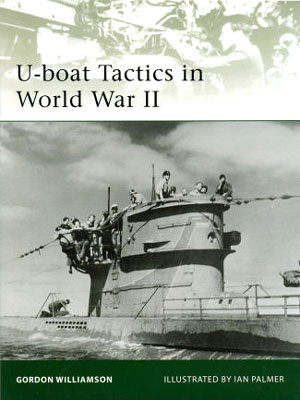
|
| |
|
|
|
|
 |
|
|
U-boat Tactics in World War Two
 |
U-boat Tactics in World War Two
Elite 183
Author Gordon Williamson; Illustrator Ian Palmer
Reviewed by Blake Coster
Outside of tank combat in World War Two, the most fascinating topic for me is the attempt by the German U-boat arm to cut Britain’s shipping lifeline across the Atlantic. So when a copy of Osprey’s U-boat Tactics in World War Two arrived at the Battlefront Studio, I put my hand up to review it for the website.
The book begins by providing a summary of official doctrine and is highlighted by descriptions of some of the more famous action by German U-boat Aces such as Otto Kretschmer's quest to archive "one torpedo, one ship", Günther Prien (who sunk the HMS Royal Oak while in anchorage at Scapa Flow), Reinhard Hardegen (during Operation Drumbeat in the waters of the US eastern seaboard) and of course, the tactics behind the infamous Wolfpacks.
Learn more about U-boat Tactic in World War Two here... |
Interspersed amongst its pages are numerous illustrated examples of the topics covered in the main text. The detailed descriptions that accompany each illustration do an outstanding job of explaining each diagram and gives the reader a more in depth explanation of what the author is talking about. The most entertaining of these examples is the Bachstelze (or ‘Wagtail’), an unpowered gyrocopter that was launched like a kite when the U-boat was running on the surface. Its purpose was to increase the visual range of the U-boat (potentially up to 25 miles). However, if the U-boat was forced to dive for whatever reason the cable was simply cut and the poor soul on board was left in the faint hope that the U-boat would return to pick them up once the coast was clear. In addition to the illustrated examples are the various black and white historical photos which provide further insight on what life must have been like for the men aboard.
Other highlights include the sections on Offensive Weapons and Defensive Equipment. Covering everything from the U-boat’s arsenal of torpedoes to the unique devices created in order for the U-boats to help maintain a high degree of stealth.
Overall, the book is extremely well written and provides the reader with a small insight into the world of U-boat men during this period. As I find is the case with many of the Osprey books of this nature, they provide a starting point to sparks one’s interest in a specific topic for further reading. Checking out the bibliography at the back of the book is a must.
Highly recommended to anyone who shares my passion for U-boat warfare.
~ Blake.
|
Last Updated On Friday, March 11, 2011 by Blake at Battlefront
|
|
|